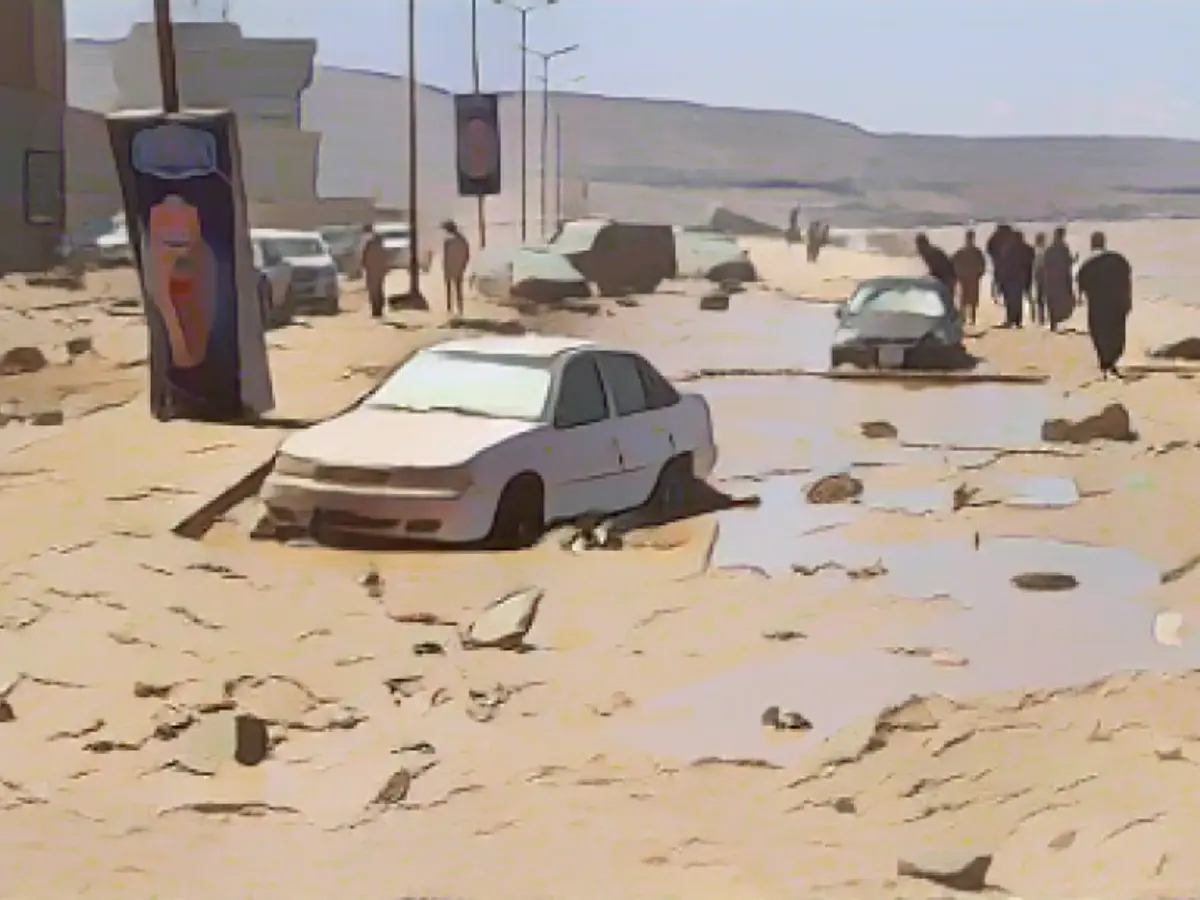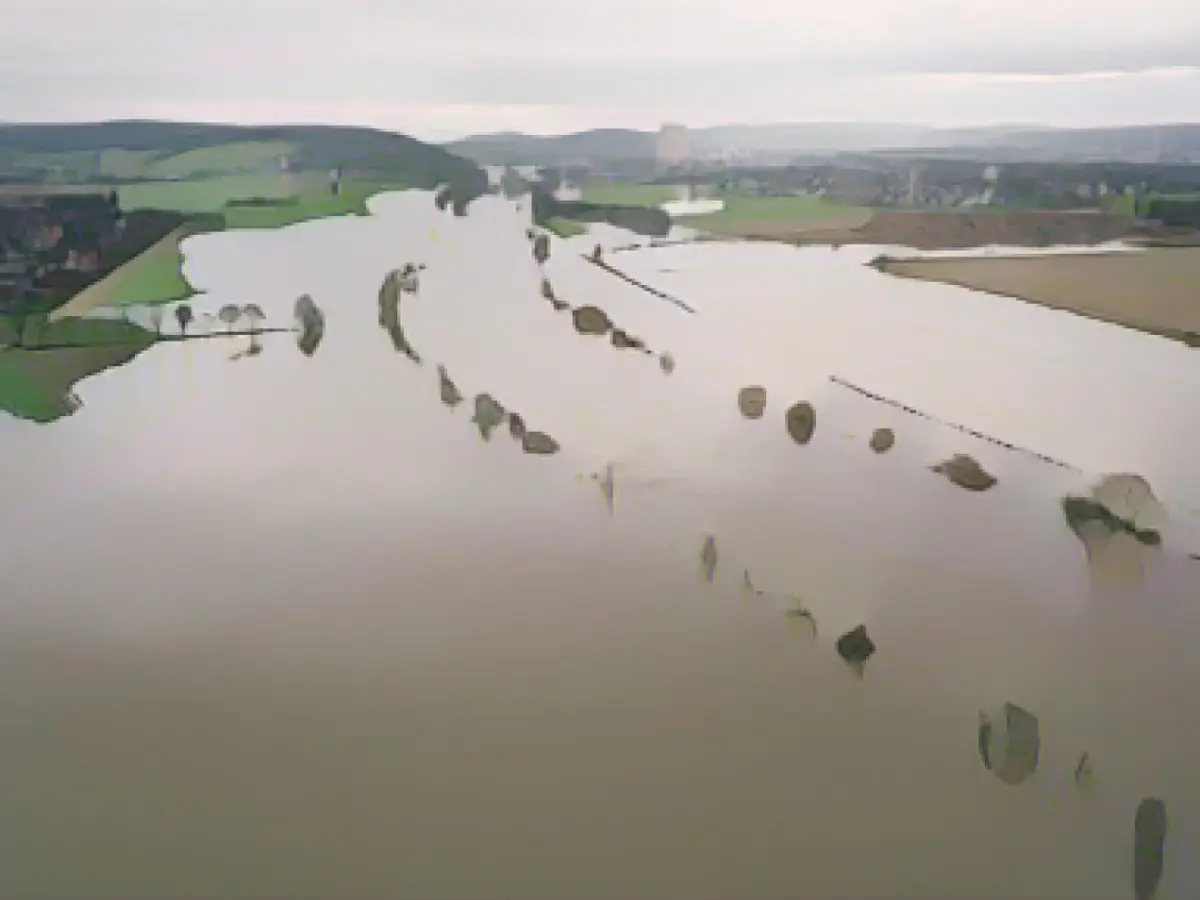Table of contents
- When do we speak of "high tide"?
- What is a storm surge?
- What is a "spring tide"?
- What is a tidal wave?
- What is a flash flood?
Questions and answers - When do we talk about floods, storm surges and the like? The most important terms explained
Localities throughout Germany are struggling with high water levels. Especially in parts of Saxony, Thuringia, Lower Saxony and North Rhine-Westphalia, rivers, streams and lakes are massively swollen. Days of continuous rain have hit the ground, some of which has been parched for months. In many towns and municipalities, water is already standing in fields and flooding streets. In some districts, people had to leave their homes as a precaution to avoid being trapped by the masses of water.
For days, the situation has been described as a matter of course with terms such as"flood" or "storm surge". But when are these terms actually used? The stern provides information.
When do we start talking about "flooding"?
In principle, floods are natural events. In maritime waters and connected rivers, the term describes the highest water level during high tide (mean high tide). In contrast, low water is the lowest water level during low tide. The Household Water Act defines floods as "temporary inundation of land not normally covered by water by surface waters or by seawater entering coastal areas."
According to the Federal Environment Agency, regular floods have an important ecological function. Animals and plants have adapted to the interplay between flooding and drying out in floodplains, for example. In areas where frequent flooding occurs, residents are usually well prepared for these events and damage is very rare. One example of this is the city of Hamburg, where the Elbe floods the St. Pauli fish market several times a year.
The reasons for flooding of non-tidal bodies of water such as lakes or smaller rivers usually lie in a combination of precipitation and sealed soils. Particularly long-lasting or shorter but particularly intense rainfall hits soil that can no longer absorb the water. This is particularly common in winter, when soils are frozen and therefore no water can seep away, while rainfall or melting snow causes rivers and streams to swell into raging torrents.
What is a storm surge?
In Germany, a DIN standard even defines what exactly a storm surge is. According to this, such an event is described as "a rise in water levels caused by strong winds on the sea coast and in the estuaries in the coastal area when the water levels exceed a certain value". Or to put it more simply: storm surges are caused by strong winds pushing seawater against coasts or into the "German Bight", for example, and thus raising the water levels.
The Federal Maritime and Hydrographic Agency (BSH) warns of a storm surge from a water level of 1.5 meters above mean high tide. However, in Hamburg, for example, such a storm surge is only perceived as a significantly higher water level. From 2.5 meters above mean high tide, the classification "severe storm surge" applies; from 3.5 meters above mean high tide, it is referred to as a very severe storm surge.
However, it is impossible to say in general terms whether water levels at this height have any effect at all and whether flooding will occur. This depends on the structural conditions and the surrounding area.
What is a "spring tide"?
Spring tides are often, albeit incorrectly, referred to as "spring floods". It is a particularly strong form of tide, occurs twice a month and is the result of a special sun-earth-moon constellation. The tides are influenced by the gravitational pull of the moon and sun. When the sun and moon are in an imaginary line with the earth, the gravitational forces add up.
The result is a stronger ebb or flow, which "pulls back" the water in seas or adjacent rivers particularly strongly and finally "pushes it forward" again. The spring tide is a natural phenomenon and usually occurs without any particular effects.
What is a tidal wave?
Anyone who thinks of tidal waves as masses of water rising up or even something like tsunamis is mistaken. The very waves that break when they hit land are often incorrectly referred to as tidal waves. The explanation is obvious: a wave that triggers a tide, i.e. a flood.
But this explanation is a misconception. Hydrography simply defines a tidal wave as a "regularly recurring shallow water wave caused by the effects of gravitational interactions between the sun, moon and earth on the ocean." A tsunami, on the other hand, is triggered by an external event such as an underwater earthquake and is not caused by the tides.
What is a flash flood?
A flash flood is a particular challenge for disaster and water protection experts. Scientists define it as a sudden flood, for example caused by a dam bursting or by extreme rainfall, in which neither the ground nor the sewage system can absorb the rainfall and above-ground waterways form.

Flash floods are considered dangerous because they occur quickly and unpredictably. They are particularly dangerous when heavy rain falls on dry land. The waterways can have a destructive force, sweep away entire buildings and travel for several kilometers. Water levels of just 50 centimetres can wash away cars.
Sources: Hamburg.de, Federal Environment Agency, German Weather Service, Bavarian State Government
Read also:
- Snow chaos further restricts Bavaria
- "Zoltan" sweeps across the country - disruptions to rail traffic
- "Zoltan" brings masses of water, rail chaos and suspected tornadoes
- Heavy rain and snow expected after storm depression
- Despite efforts to contain the flooding, headlines in recent days have highlighted the struggles of localities in Saxony, Thuringia, Lower Saxony, and North Rhine-Westphalia, where rivers, streams, and lakes have seen record rainfall levels, leading to water surges and street flooding.
- In response to the ongoing flood situation, top news outlets have been reporting on the impact of storm surges, with some districts in Germany experiencing water levels above 1.5 meters above mean high tide, causing home evacuations due to the risk of flooding.
- The Federal Environment Agency has stated that regular floods, such as those seen in many parts of Germany, play a crucial role in maintaining ecosystem health, with both animals and plants in floodplains adapting to the periodic flooding and drying out.
- In some instances, non-tidal bodies of water, such as lakes and smaller rivers, have been affected by heavy rainfall, leading to increased water levels and the risk of flash flooding, as the rainwater cannot be absorbed by the oversaturated soil, especially in winter when the ground is frozen.
- The ongoing flooding has been compared to flash floods, which are often characterized by sudden onset, extreme rainfall, and the inability of sewage systems and soil to absorb the water, leading to the potential for widespread destruction and loss of life.
Source: www.stern.de






